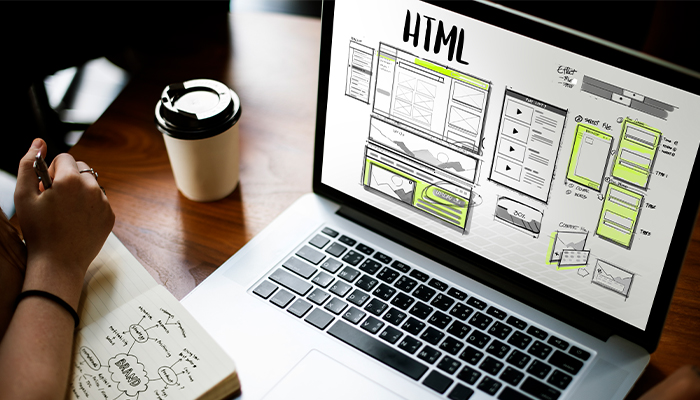
Web Design Services in Hungary
November 13,
10:40 AM
In today’s digitally driven world, having an effective online presence is more than just a luxury it's a necessity. For businesses and individuals who want to succeed, having a high-quality, user-friendly, and visually appealing website is essential. In Hungary, the demand for professional web design services has grown significantly over the years, driven by the country’s thriving tech scene, skilled workforce, and competitive prices. This article offers a comprehensive guide to web design services in Hungary, highlighting why Hungarian web design companies are an excellent choice for global clients.
Why Choose Web Design Services in Hungary?
Hungary has quickly become a popular destination for outsourcing web design and development services. There are several key reasons why international businesses are choosing Hungarian web design companies for their projects:
1. Cost-Effectiveness
One of the primary reasons businesses opt for web design services in Hungary is the cost. Hungary offers high-quality web design solutions at a fraction of the cost compared to Western European or North American markets. Despite the lower cost, Hungarian web design companies maintain high standards of professionalism, innovation, and technical expertise. This makes Hungary an attractive destination for companies looking to get value for money without compromising on quality.
2. Skilled Workforce
Hungary has a robust educational system, particularly in fields related to design, engineering, and technology. The country produces highly skilled professionals who are well-versed in the latest web design trends, coding languages, and software tools. This ensures that businesses partnering with Hungarian web design companies have access to a talent pool that is both knowledgeable and adaptable to the changing demands of the digital world.
3. Technological Innovation
Hungary is home to a thriving tech ecosystem, with a b emphasis on innovation and creativity. Web designers in Hungary use cutting-edge tools and technologies to ensure that websites are not only visually attractive but also highly functional and scalable. Whether it’s the use of modern front-end frameworks like React, Angular, or Vue.js, or back-end solutions such as PHP, Ruby on Rails, or Python, Hungarian web designers are well-equipped to handle complex web development projects.
4. Cultural Understanding and Global Reach
Hungary’s central location in Europe gives it a strategic advantage when it comes to serving clients from different parts of the world. With a deep understanding of both Eastern and Western cultures, Hungarian web design companies are adept at creating websites that cater to diverse audiences. Their ability to combine global design trends with local preferences makes them a go-to choice for businesses looking to target both regional and international customers.
5. High-Quality User Experience (UX)
User experience has become one of the most important aspects of web design. A website must not only look good but also be easy to navigate and intuitive for visitors. Hungarian web design services focus on creating websites that offer an exceptional user experience. From simple navigation to fast load times, responsive designs, and accessibility features, Hungarian designers ensure that websites are user-friendly and functional across all devices.
Key Elements of Web Design Services in Hungary
When it comes to web design services, the process involves much more than simply choosing colours, fonts, and images. To build a successful website, various elements must be carefully considered. Hungarian web design companies take a holistic approach to ensure that all aspects of a website are optimised to meet the clients business goals.
1. Responsive Design
With the increasing number of users accessing websites on mobile devices, responsive web design has become a non-negotiable element of modern web design. A responsive design ensures that a website adjusts seamlessly to different screen sizes, including desktops, laptops, tablets, and smartphones. Hungarian web designers prioritise responsive web design, making sure that your website looks great on all devices and ensuring that users have a positive experience regardless of how they access the site.
2. User-Centric Design (UX/UI)
User experience (UX) and user interface (UI) design are integral to the success of any website. UX design focuses on the overall experience of the user as they navigate the site, while UI design deals with the visual elements of the website, such as buttons, icons, and layout. Web design services in Hungary place a b emphasis on creating websites that are not only visually appealing but also functional and easy to navigate. Through thoughtful UI/UX design, Hungarian web designers ensure that users can interact with the website smoothly, improving customer satisfaction and increasing the likelihood of conversions.
3. SEO Optimisation
Creating a visually stunning website is important, but it’s equally crucial that your website is discoverable on search engines like Google. Search engine optimisation (SEO) plays a critical role in boosting your website’s visibility and driving organic traffic. Hungarian web design services incorporate SEO best practices into the design process, ensuring that your website is optimised for search engines right from the start. This includes structuring the website in a way that makes it easy for search engines to crawl, using optimised images, and implementing clean code.
4. E-commerce Solutions
As online shopping continues to grow, many businesses need robust e-commerce websites that offer secure payment options, product catalogues, and an easy checkout process. Hungarian web design companies specialise in creating custom e-commerce websites that are not only visually appealing but also feature seamless shopping experiences. Whether it’s integrating with popular payment gateways, designing custom shopping carts, or building complex product filtering systems, Hungarian designers are skilled at creating e-commerce solutions tailored to the needs of businesses in different industries.
5. Custom Web Development
For businesses with specific needs, a custom-built website is often the best solution. Hungarian web design services go beyond pre-made templates and offer custom web development solutions. This means that the website is tailored specifically to your business needs, functionality, and branding. Whether you need a content management system (CMS), a customer portal, or a complex web application, Hungarian web designers and developers have the expertise to create custom solutions that align with your business goals.
6. Website Maintenance and Support
Building a website is just the first step. Websites require ongoing maintenance and updates to remain relevant and secure. A reliable web design company will offer continuous support, ensuring that your website is kept up to date with the latest security patches, content updates, and performance optimizations. Whether it’s fixing bugs, adding new features, or updating content, Hungarian web design companies offer ongoing maintenance packages to ensure that your website remains functional and secure in the long run.
When you choose to work with a Hungarian web design company, the process typically involves a series of well-structured phases. Each phase is crucial to ensuring that your website meets your business objectives and delivers a seamless user experience. Below is a detailed breakdown of each stage in the web design process, from initial consultation to ongoing maintenance.
1. Initial Consultation and Discovery
The journey of building a website begins with a comprehensive consultation and discovery phase. This is the foundation of your entire project, and it plays a vital role in ensuring that the web design company fully understands your needs, goals, and expectations.
What Happens During the Initial Consultation?
- Understanding Your Business Goals: During this phase, the design team takes the time to learn about your business. They will enquire about the purpose of your website; whether it's for generating leads, selling products, creating brand awareness, or offering services. This helps them align the design with your business objectives.
- Target Audience Research: One of the key outcomes of the consultation is understanding who your target audience is. Whether your customers are millennials, professionals, or tech-savvy individuals, the design company needs to grasp the demographics and preferences of the audience you are catering to. This helps in creating a website that resonates with them.
- Brand Identity Review:Your website must reflect your brand’s identity—its personality, values, and unique selling points. The design company will likely review your existing branding elements, such as logos, colour schemes, typography, and tone of voice, to ensure consistency across your digital presence. If you don't already have a well-defined brand identity, they may help you develop one.
- Functional Requirements: At this stage, the design company will also ask about any specific functionalities you need, such as an e-commerce store, contact forms, interactive elements, or integration with third-party tools. This is crucial for the technical aspects of the website, as it ensures that the final product meets both your aesthetic and functional requirements.
- Budget and Timeline: Setting realistic expectations about the budget and timeline is essential for both parties. You’ll discuss the scope of work, resources required, and the timeframe in which you want the website to be completed. This helps the design company provide a more accurate project plan and avoid any misunderstandings later.
The initial consultation and discovery phase laid the groundwork for a successful partnership. It ensures that the design company understands your business and vision, which is critical for crafting a website that fulfils your needs.
2. Wireframing and prototyping
Once the design team has gathered all the necessary information about your goals, brand, and functionality, the next phase is wireframing and prototyping. This is where the blueprint of your website begins to take shape.
Wireframes: Wireframes are basic, skeletal representations of the website’s layout. They focus on the structure and content placement rather than design details such as colours or images. Wireframes typically include the following elements:
- Header and Navigation: This section maps out where the main navigation menu, logo, and search bar will appear.
- Page Layouts: It outlines the layout of key pages, such as the homepage, about us page, and product pages, showing where text, images, and other content will be placed.
- Call-to-Action (CTA) Buttons: Wireframes will identify key areas for buttons like “Contact Us” or “Buy Now,” guiding users to take specific actions.
- Content Hierarchy: This shows the arrangement of content on each page in a logical and easy-to-follow structure.
Wireframes act as the skeleton of the website and help both the design team and client agree on the basic structure before moving forward.
Prototyping: Prototypes are more advanced than wireframes and offer an interactive experience of the website’s layout. In this phase, the design team may create clickable mockups that simulate how users will interact with the site. Prototypes are especially useful in visualising user flows and navigation paths.
- Interactive Features: prototypes allow you to see how buttons, links, and forms will work in a live environment.
- User Testing: Clients can use the prototype to test the website’s usability and provide feedback before the actual design and development work begin.
This stage allows for early-stage feedback and modifications, ensuring that the final website will meet your expectations.
3. Design and Development
Once the wireframes and prototypes are approved, it’s time for the design and development phase. This is where the project comes to life visually and functionally.
Design Phase:
- Visual Design: The design team works on the visual aspects of the website, incorporating your brand identity elements such as colours, fonts, and logos into the design. They’ll create high-fidelity mockups that depict how the website will look once it's fully designed. These mockups will include detailed imagery, typography, and colour schemes to give you a clear idea of what the final product will look like.
- User Interface (UI) Design: The design team focuses on the user interface, ensuring that the website is visually appealing and easy to use. They design intuitive navigation, user-friendly forms, and a layout that makes it easy for visitors to find what they need.
Development Phase:
- Front-End Development: In this phase, the developers begin coding the front-end of the website, which includes the elements that users see and interact with directly. This includes creating the homepage, product pages, navigation menus, and other UI components. Front-end developers use HTML, CSS, and JavaScript to bring the design to life.
- Back-End Development: Back-end development involves the server-side of the website. It includes database setup, integration with third-party tools, API integration, and any dynamic features that will be part of your site. This is where the more technical aspects of functionality come into play, such as content management systems (CMS), e-commerce systems, and user authentication.
Both the design and development teams must work closely together to ensure that the visual design translates into functional code and that the website operates seamlessly on both the front-end and back-end.
4. Quality Assurance and Testing
Quality assurance (QA) and testing are critical to ensuring that the website performs well and is free of bugs. This phase is carried out before launching the site, and it includes several rounds of testing to check for usability, performance, and security.
Types of Testing:
- Cross-Browser Testing: Ensures that your website works properly across different browsers like Chrome, Firefox, Safari, and Edge. This is crucial because users may access your website using various browsers, and you want to ensure that it provides a consistent experience across all platforms.
- Mobile Responsiveness Testing: Verifies that the website is fully functional on mobile devices. With an increasing number of users accessing websites via smartphones and tablets, mobile responsiveness is a critical aspect of website design.
- Usability Testing: Involves testing the website’s user interface and user experience. QA testers ensure that all elements are intuitive, easy to navigate, and that users can achieve their goals on the site with minimal effort.
- Load and Performance Testing: This involves testing how the website performs under high traffic or load conditions. The team checks for speed issues, server response times, and page load times to ensure a smooth user experience, even during traffic spikes.
- Security Testing: Ensures that the website is secure from potential threats such as hacking or data breaches. The QA team tests for vulnerabilities and ensures that sensitive data is protected, especially on e-commerce sites that handle payments.
Once the website passes all the necessary tests, the team will make final adjustments and fixes based on the feedback.
5. Launch and Ongoing Maintenance
After the website has passed all quality assurance and testing procedures, it’s time for the final launch. This is the moment when your website goes live and becomes accessible to the public.
Launch Phase:
- Final Checks: Before the website is launched, the design and development teams conduct a final round of checks. This includes making sure all content is properly placed, all links are functioning, and there are no last-minute bugs.
- SEO Setup: The website is optimised for search engines (SEO) to ensure it ranks well on Google and other search engines. This includes setting up meta tags, alt texts for images, URL structures, and sitemap files.
- Launch Monitoring: The design company will monitor the website after launch to ensure that everything is functioning properly. This includes checking for server uptime, performance issues, and addressing any initial glitches that may arise.
Ongoing Maintenance: A successful website requires continuous maintenance to stay up-to-date, secure, and relevant. Hungarian web design companies often offer maintenance packages to ensure that your site remains in top shape.
- Content Updates: Regular content updates keep the website fresh and engaging for visitors. This may include blog posts, new product offerings, or updated company information.
- Security Updates: Regular security patches and updates are necessary to protect the site from vulnerabilities. This is especially important if the site handles sensitive customer data.
- Performance Monitoring: Regular performance checks ensure that the website continues to perform well under varying loads and across different devices.
Ongoing maintenance ensures that your website remains functional, secure, and aligned with the evolving needs of your business.
Conclusion
Hungary has emerged as a global destination for web design services, thanks to its highly skilled workforce, cost-effective solutions, and cutting-edge technology. Whether you need a simple website or a complex web application, Hungarian web design companies offer a broad range of services that can help businesses enhance their online presence.
By focusing on key elements like responsive design, user experience, SEO, and custom web development, Hungarian web design services ensure that your website is not only visually appealing but also functional and optimised for performance. With the right web design partner in Hungary, your business can achieve a b online presence, attract more customers, and stay competitive in today’s digital landscape.









